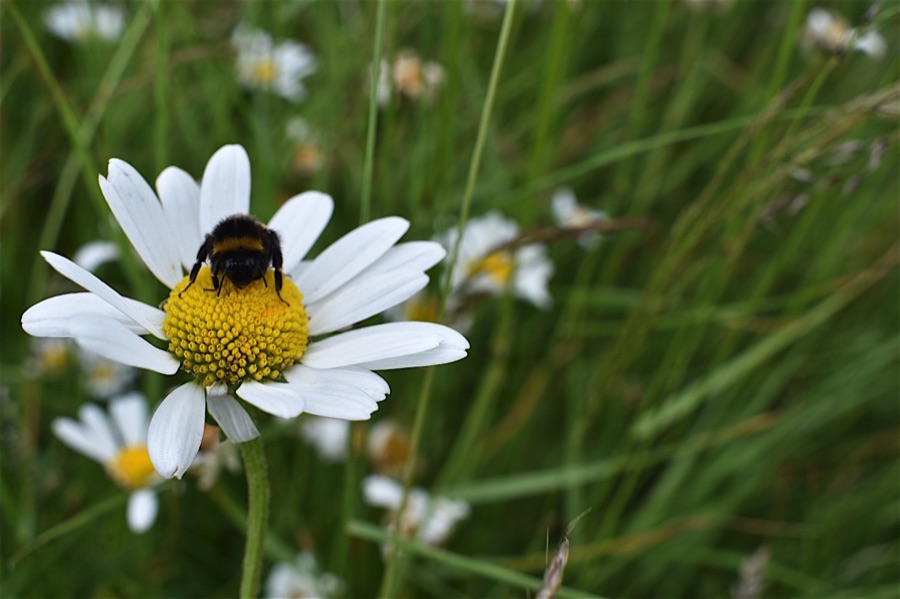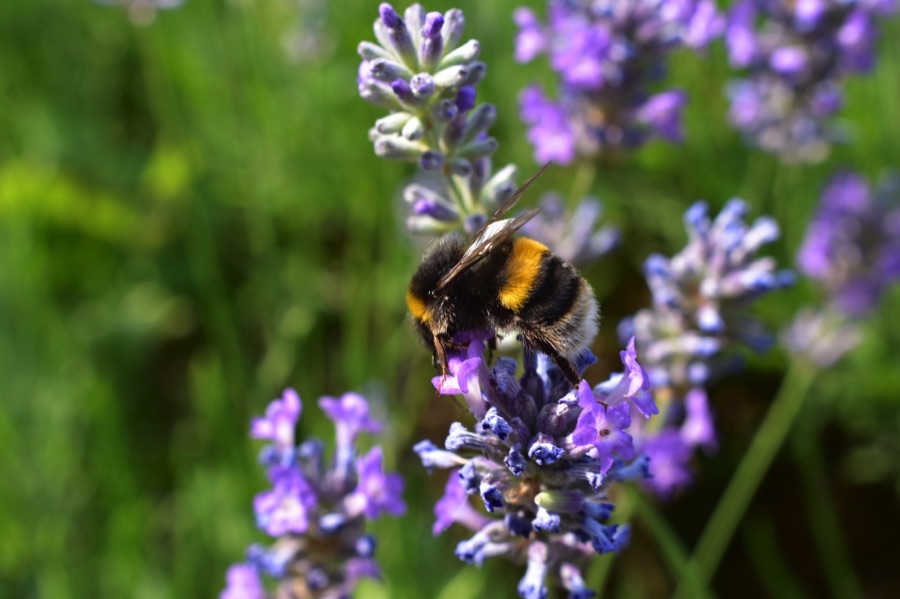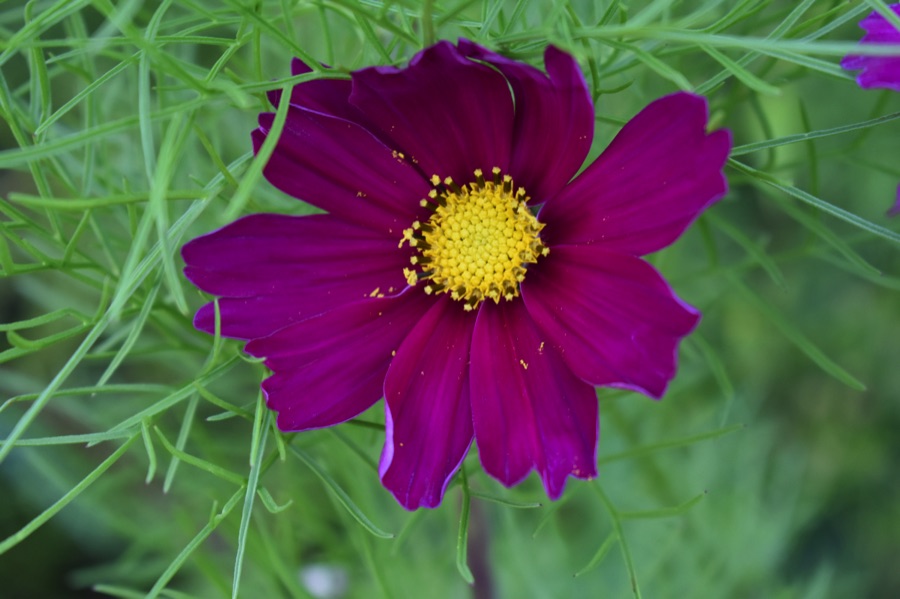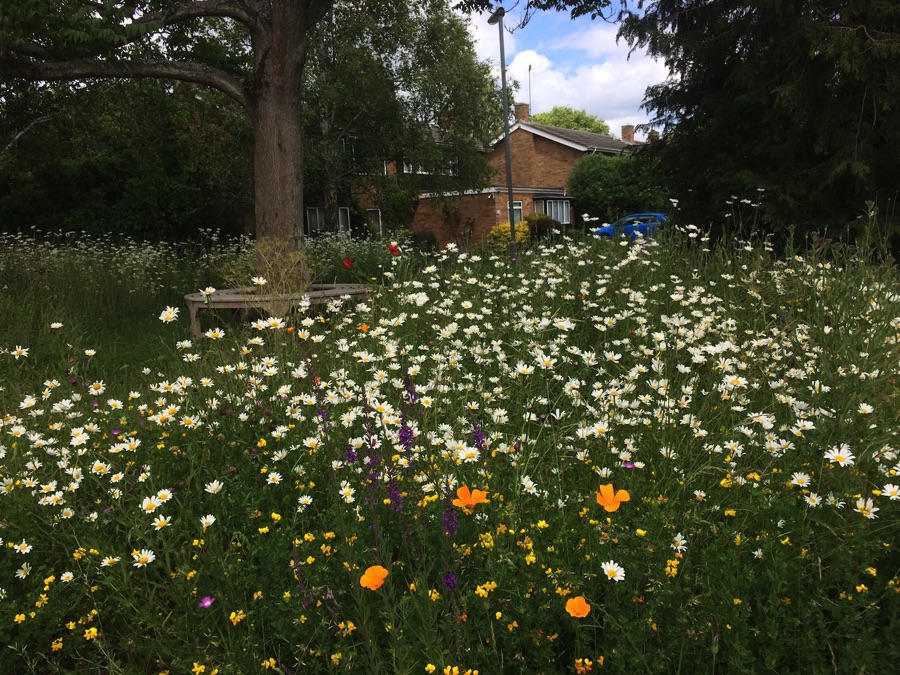
Buzzing gardens
Gardens are vital habitats for bees and other pollinators. Create a haven for these essential insects by including some 'super plants' in your planting
Gardens are vital for the survival of bumblebees – and there's so much that can be done in your garden or community green space to help.
More flowers and wild spaces in urban areas are not only good for bees, but also for people – with a proven positive effect on people's mental and physical health.
Increasing habitat, creating nesting sites, and providing enough flowers for bumblebees to feed from are important ways people can take action – and Pollinating the Peak's Buzzing Gardens project has helped by giving away hundreds of bumblebee friendly plants and working with local community gardening groups.
need
super plants!






Pollinator-friendly community garden, Cambridge
The Bumblebee Conservation Trust's Bee Kind gardening tool has enabled people to make bee-friendly choices when choosing plants, and includes more than 800 plants.
The Trust worked with the Royal Horticultural Society to identify the best nectar-rich plants, and volunteers contributed hours of their time inputting the data.
Super plants
The Bee Kind tool helps gardeners and people managing parks and other public spaces to assess how well areas are performing in terms of helping bumblebees.
Some plants in the Bee Kind tool are classed as 'super plants' because they are particularly good for bumblebees.
There are lots of ways you can create bee-friendly habitats in your garden or community green space – and all the plants suggested below are classed as 'super plants' on the Bee Kind tool.
Spring flowering bulbs, such as crocus and allium, offer nectar to bumblebees early in the season and are easy to grow. Herbs like lavender, thyme and rosemary are also low-maintenance plants that are loved by bees as well as butterflies.
Fruit trees, such as apples, are brilliant for bumblebees, as they provide masses of nectar-rich blossoms close together. Bumblebees can only fly for around 40 minutes before running out of energy, so fruit trees and orchard areas with a profusion of flowers are a great help.
And there are lots of bee-friendly flowers that don't need planting at all. If you leave an area of grass to grow long, wildflowers will often appear. Dandelion, red clover and ox-eye daisy are all plants that often appear in grass when you take a break from the mowing – and they're all bee 'super plants'.
Some bumblebees nest in long grass – and leaving a corner to become a little wilder can also allow bee-friendly plants such as teasels, red campion and dead nettle to grow.
Wild areas such as these are superb for all sorts of wildlife, not just bumblebees. Frogs, toads and hedgehogs shelter in long grass and hibernate in undisturbed areas. And all sorts of invertebrates will benefit from this sort of habitat – in turn attracting birds and bats.
As well as creating nectar-rich habitats, avoid using pesticides, weedkillers or other chemicals in the garden.
Little Green Space August 2022
Little Green Space is a non-profit project sharing solutions to the nature and climate crises, and offering inspiration for a greener lifestyle. If you like our content, please help keep us going with a small donation!
If you're short of space and money, try growing annuals such as cosmos or common marigold. These are grown from packets of seed that don't cost a lot – and many annuals thrive in patio pots.
Ads/Affiliate links

